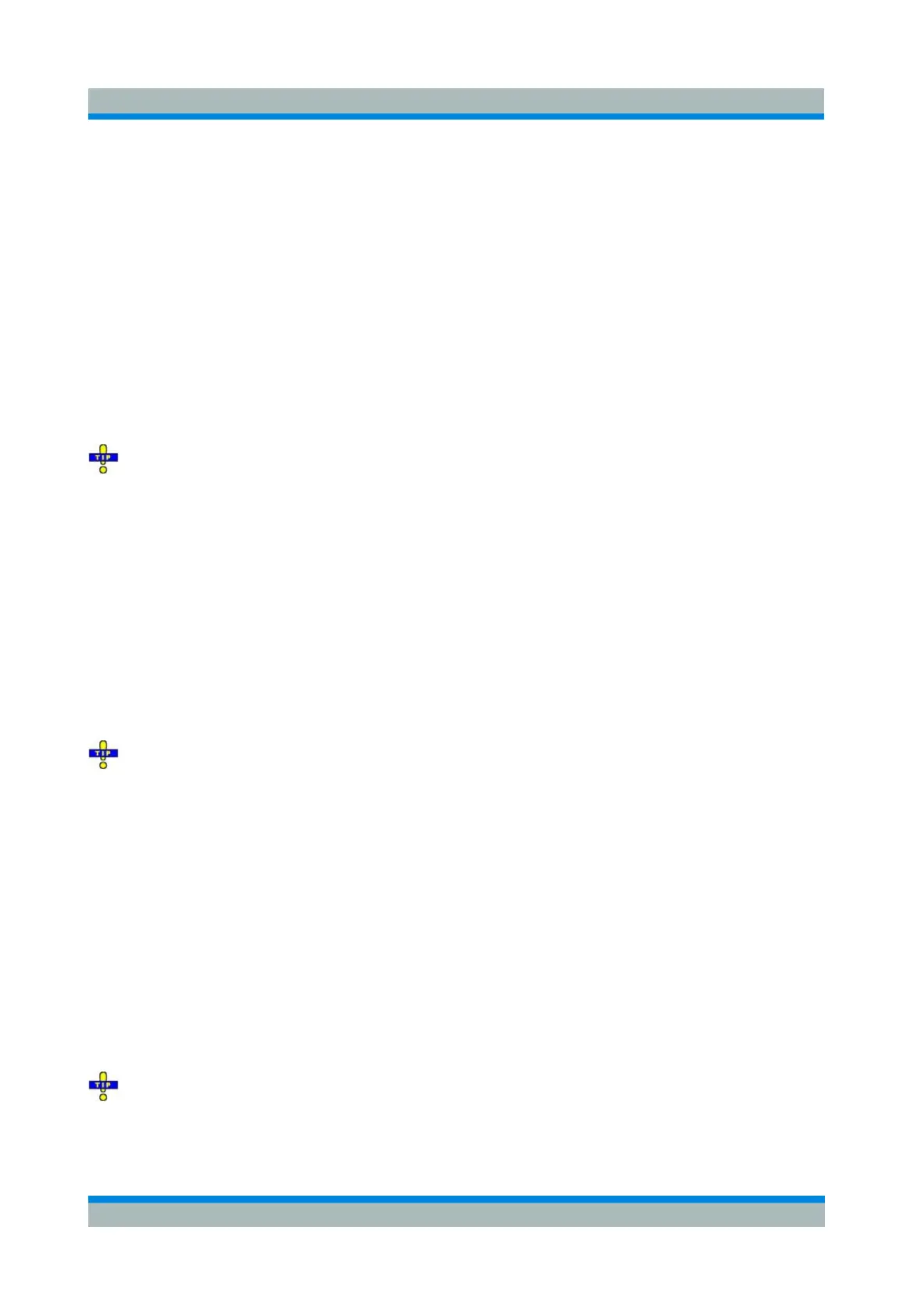R&S ZVL GUI Reference
Trace Menu
Operating Manual 1303.6580.32-06
197
SWR = V
Max
/V
Min
= (|V
I
| + |V
R
|) / (|V
I
| – |V
R
|) = (1 + |S
ii
|) / (1 – |S
ii
|)
Application: Reflection measurements with conversion of the complex S-parameter to a real SWR.
Remote control:
CALCulate<Chn>:FORMat SWR
Lin Mag
Selects a Cartesian diagram with a linear vertical axis scale to display the magnitude of the measured
quantity.
Properties: The stimulus variable appears on the horizontal axis, scaled linearly. The magnitude of the
complex quantity C, i.e. |C| = sqrt ( Re(C)
2
+ Im(C)
2
), appears on the vertical axis, also scaled linearly.
Application: Real measurement data (i.e. the Stability Factors, DC Input 1/2, and the PAE) are always
displayed in a Lin Mag diagram.
Alternative Formats
The magnitude of each complex quantity can be displayed on a logarithmic scale. It is possible to view the
real and imaginary parts instead of the magnitude and phase.
Remote control:
CALCulate<Chn>:FORMat MLINear
Real
Selects a Cartesian diagram to display the real part of a complex measured quantity.
Properties: The stimulus variable appears on the horizontal axis, scaled linearly. The real part Re(C) of
the complex quantity C = Re(C) + j Im(C), appears on the vertical axis, also scaled linearly.
Application: The real part of an impedance corresponds to its resistive portion.
Alternative Formats
It is possible to view the magnitude and phase of a complex quantity instead of the real and imaginary
part. The magnitude can be displayed on a linear scale or on a logarithmic scale. Both the real and
imaginary parts are displayed in the polar diagram.
Remote control:
CALCulate<Chn>:FORMat REAL
Imag
Selects a Cartesian diagram to display the imaginary part of a complex measured quantity.
Properties: The stimulus variable appears on the horizontal axis, scaled linearly. The imaginary part
Im(C) of the complex quantity C = Re(C) + j Im(C), appears on the vertical axis, also scaled linearly.
Application: The imaginary part of an impedance corresponds to its reactive portion. Positive (negative)
values represent inductive (capacitive) reactance.
Alternative Formats
It is possible to view the magnitude and phase of a complex quantity instead of the real and imaginary
part. The magnitude can be displayed on a linear scale or on a logarithmic scale. Both the real and

